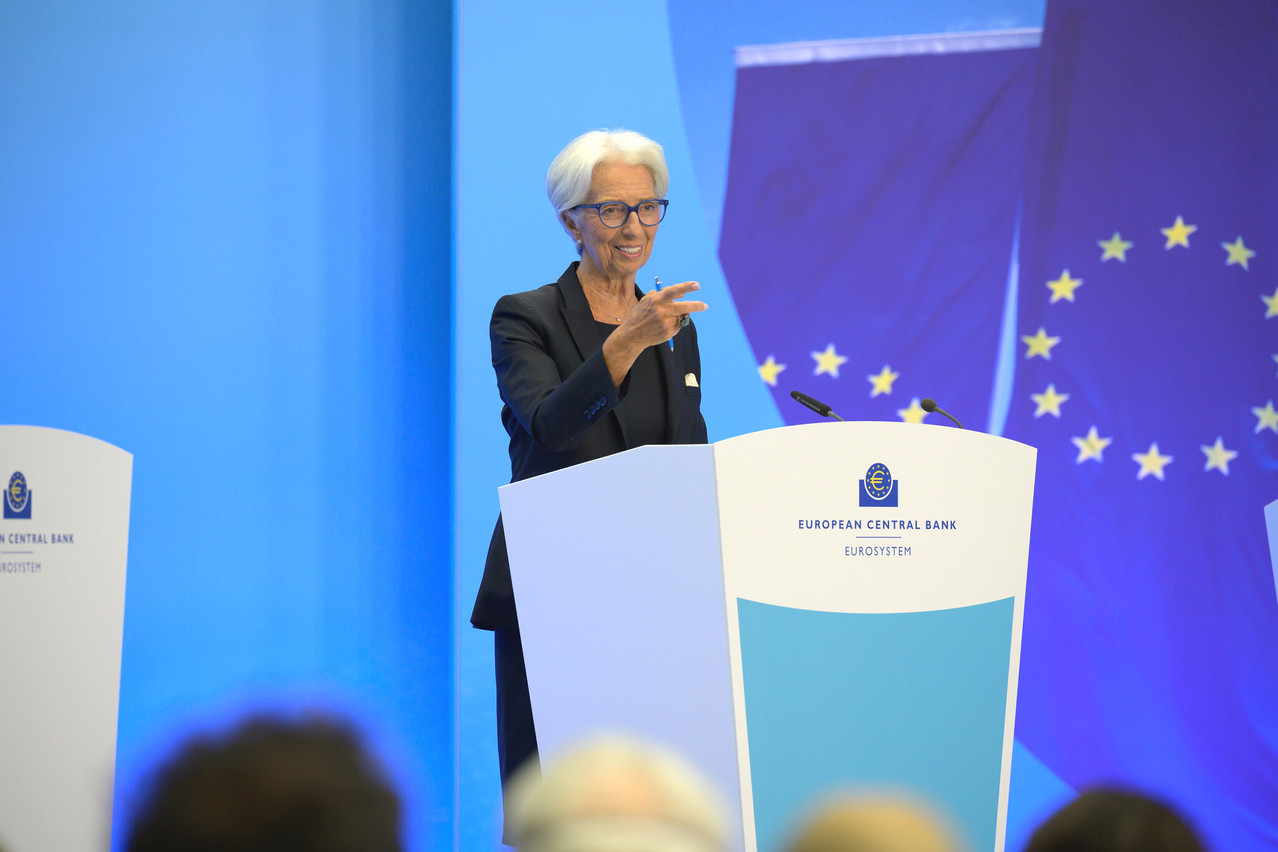Did the European Central Bank really surprise the markets on Thursday by raising its key interest rates by 50 basis points? Maybe not. Long-term rates hardly moved at all. “The German 10-year has remained broadly unchanged,” noted Alexandre Gauthy, macroeconomist at Degroof Petercam Luxembourg.
Gauthy said the increase in ECB rates was already integrated into long-term rates that have been rising since the beginning of the year. “I don’t think this increase is a real game-changer.” The impact for borrowers, whether individuals or businesses, has already been felt.
This is evidenced by the latest Luxembourg central bank (BCL) data on the evolution of the main average interest rates on credit and deposit operations applied by Luxembourg credit institutions to households and non-financial companies in the euro area.
The variable interest rate on loans to households for house purchase increased by 4 basis points from June 2021 to May 2022, to 1.36%. Over the same period, the fixed interest rate rose by 72 basis points to 2.05%. For loans over 10 years, the increase was 22 basis points to 2.11%. For consumer loans, the annual increase was 36 basis points to 2.89%.
For non-financial companies, the variable interest rate for loans of €1m or less fell over twelve months by 9 basis points to 1.32%. For loans above €1m, the annual increase is 20 basis points to 1.11%.
Although rates are rising overall, there is no credit shock yet.
In its latest survey on the distribution of bank credit in the euro zone, which dates from July 2022, the ECB noted that banks have tightened their lending criteria for businesses and households, “as uncertainty remains high and monetary policy becomes less accommodating”. This risk aversion will automatically lead to an increase in the demand for guarantees and capital from banks.
Monetary policy condemned to be accommodating
The real concern is the effect on growth of the ECB’s rate hike.
Quintet Private Bank is concerned about the impact on European growth. Daniele Antonucci, its chief economist, predicted the euro area would “shrink for the next three quarters, including because gas rationing is probable even as the Nord Stream 1 pipeline partially resumes supply to Europe and as Italy is grappling with a political crisis.” In this very turbulent environment, he said on Thursday, “the ECB is likely tightening into a recession.”
And in the face of this risk, the economist believes that the next rate hikes--the ECB’s baseline scenario in June was for a 50bp hike by September after a 25bp hike in July--“will be more limited than is current market consensus”, Antonucci said. “The ECB is facing reduced domestic inflation pressure compared to some regions--as euro area core inflation is lower than in the US, for example--but higher imported inflation via rising oil and gas prices, as well as a weaker currency. With less control over these external drivers, and having somewhat missed the window for tighter monetary policy, we think the ECB will likely respond less forcefully than other central banks over the coming months.”
And he pointed to Christine Lagarde, who, at the ECB press conference following the rate hike announcement on 21 July, insisted that further normalisation of interest rates would be done “meeting by meeting” and would depend exclusively on economic data developments.
Will the ECB definitely switch to the hawkish camp, like the Fed, which is tightening monetary policy sharply? Wolfgang Bauer, fund manager on the public fixed income team at M&G Investments, does not think so. He believes that even though the ECB has ended the era of negative interest rates in Europe, it is still pursuing a much more accommodating monetary policy than other major central banks. “The 0.5% hike was just a first step--albeit a bolder one than expected--towards normalising interest rates and, if inflation continues to be a problem, there is still a lot of catching up to do.”
Winners and losers
While borrowers are the most affected by the ECB’s rate hike, which impacts on the evolution of long-term rates over which central banks have no direct control, the hike will not only create losers.
The big winners should be banks, which have have been penalised for years by low rates. “This rate hike will remove a thorn from their side,” said Gauthy.
For savers, although bank savings products should see their yields increase in the long term, these yields will suffer the full force of inflation. Real rates will remain negative for some time for savers.
For investors, higher rates mean lower valuations--valuations that are historically high, even disconnected from economic fundamentals because of low rates--and lower earnings power for companies. Portfolios will have to be revived.
The big losers will be the most indebted eurozone countries. Their budgetary room for manoeuvre will be severely impacted in a context where the fight against the decline in purchasing power requires a lot of resources.
Although the ECB has created a new instrument, the Transmission Protection Instrument, its aim is to avoid financial fragmentation in the euro zone. It is not a fiscal policy instrument.
Read the original French version of this article on the site
